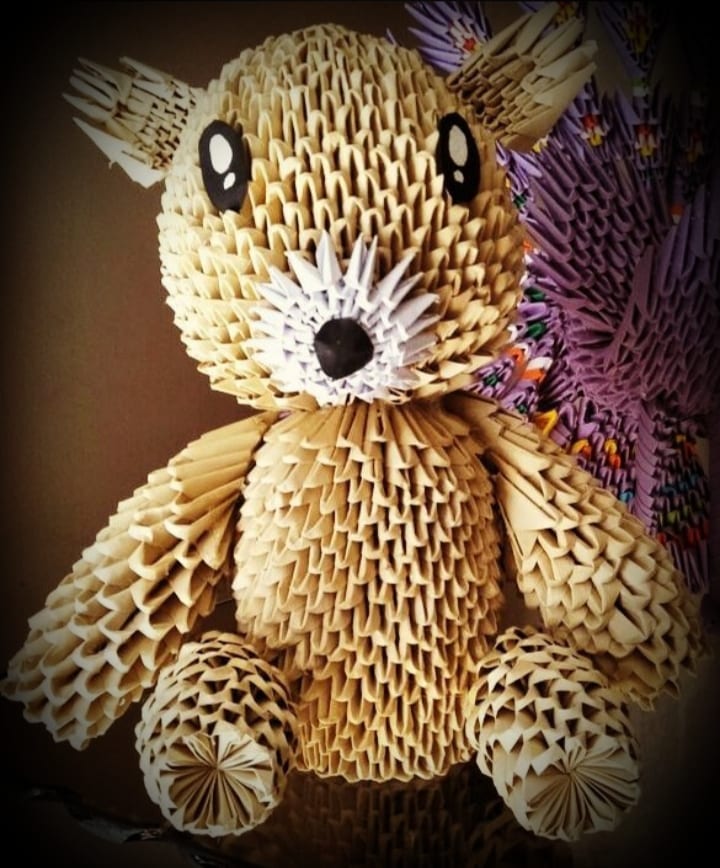Origami art is a captivating and intricate form of paper folding that transcends cultural boundaries, spanning centuries of history and artistic expression. Derived from the Japanese words “ori” (meaning “folding”) and “kami” (meaning “paper”), origami is an ancient art form that has evolved into a rich and diverse practice, encompassing a vast array of designs and techniques.
At its core, origami involves transforming a flat sheet of paper into a three-dimensional object through a series of precise folds and creases, often without the use of scissors or glue. This artistic discipline requires a deep understanding of geometry, symmetry, and proportions, as well as a keen eye for detail and patience in executing each fold with finesse. The paper used in origami varies in texture, color, and size, offering artists a vast palette to express their creativity and imagination.
Process
I have done origami art in which I made a teddy bear.
To create the teddy bear, I selected a small square-shaped piece of paper. Then, I carefully observed it, considering its characteristics and colors. After that, I folded the paper at a particular point and then unfolded it to understand where to make the correct folds. I took great care in executing each fold and crease accurately, ensuring the teddy bear would take the right form. Additionally, I added some uniqueness in crafting its large ears, so that the teddy bear would exude a cute and delicate aura.
Creating a teddy bear through origami art requires time, but the process is enjoyable, and time seems to slip away. Each moment of folding provides a distinct experience. When the teddy bear finally took its proper shape, I felt a delightful sense of joy.
Types of Origami Art
Traditional Origami
This type refers to classic origami designs that have been passed down through generations. Traditional origami often includes simple models like animals, flowers, and geometric shapes, and they are usually folded from a single square sheet of paper without any cutting or gluing.
Modular Origami
Also known as unit origami, modular origami involves folding multiple identical units and then assembling them together to create complex and intricate models. These units interlock without the need for adhesive, resulting in stunning and geometric structures.
Wet Folding
In wet folding, artists use dampened paper to create softer and more organic shapes. The moistened paper allows for more flexible and sculptural forms, making it well-suited for creating animals and figures with curves and roundness.
3D Origami
In this type, artists use small, triangular folded modules to construct large, three-dimensional sculptures. This technique allows for the creation of large-scale models that might not be achievable with traditional origami.
Minimalist Origami
Minimalist origami is characterized by its simplicity, using only a few folds to create elegant and minimalist designs. The emphasis is on precision and subtle beauty.
Conclusion
Origami art is a profound and multifaceted expression of human creativity, showcasing the harmonious marriage of mathematics, aesthetics, and cultural heritage. As it continues to evolve and adapt to modern sensibilities, origami remains a testament to the timeless power of artistic ingenuity and the beauty that can be achieved through the simple act of folding paper.


